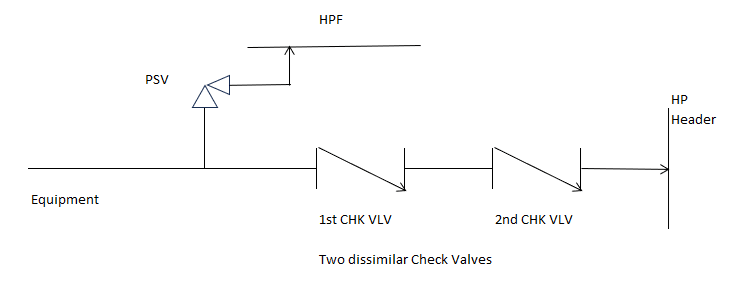Shahin2020
Chemical
Hi all,
There is a HAZOP item to protect U/S equipment from a reverse flow coming from a high-pressure header.
There is a PSV D/S of equipment.
There are two dissimilar check valves to prevent the reverse flow.
In case of double jeopardy, when one of the check valves failed open, and the second one has leakage or failed open too the PSV will function to protect the equipment.
-Can we take advantage of each check valve port area as an orifice to drop pressure before functioning the PSV?
If yes,
-Is there any rule/API guidance specifically for sizing of check valves to ensure the PSV will fully protect the Equipment?
Thank you,
There is a HAZOP item to protect U/S equipment from a reverse flow coming from a high-pressure header.
There is a PSV D/S of equipment.
There are two dissimilar check valves to prevent the reverse flow.
In case of double jeopardy, when one of the check valves failed open, and the second one has leakage or failed open too the PSV will function to protect the equipment.
-Can we take advantage of each check valve port area as an orifice to drop pressure before functioning the PSV?
If yes,
-Is there any rule/API guidance specifically for sizing of check valves to ensure the PSV will fully protect the Equipment?
Thank you,

